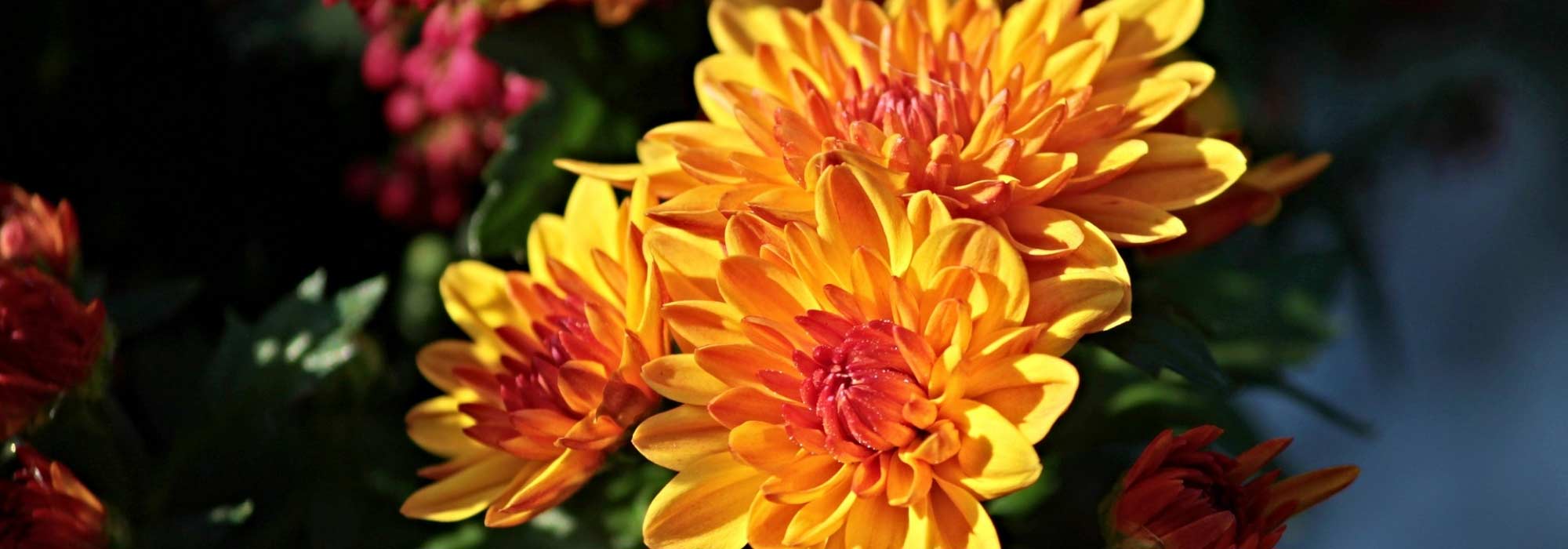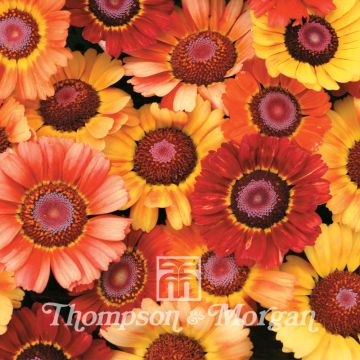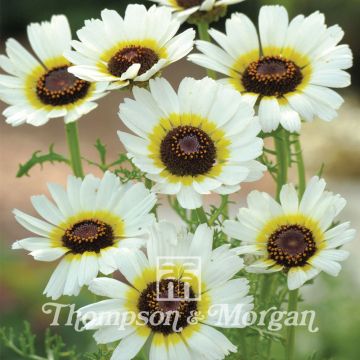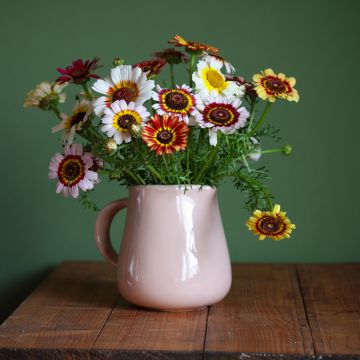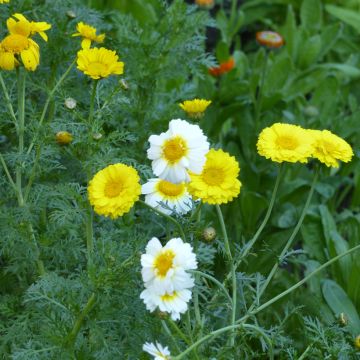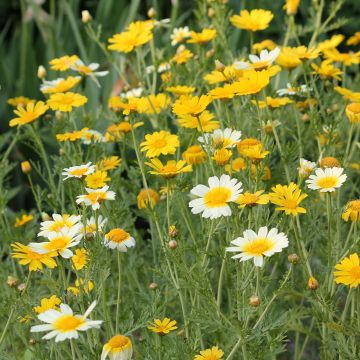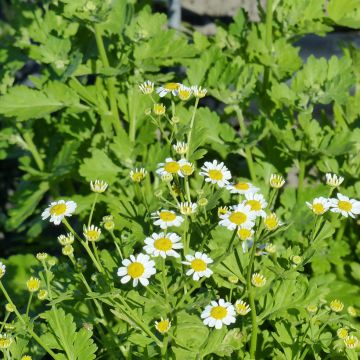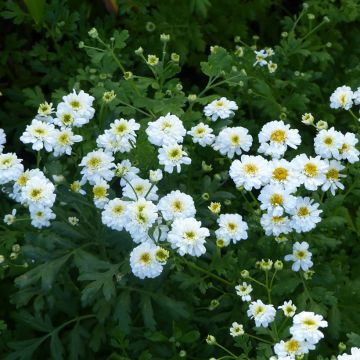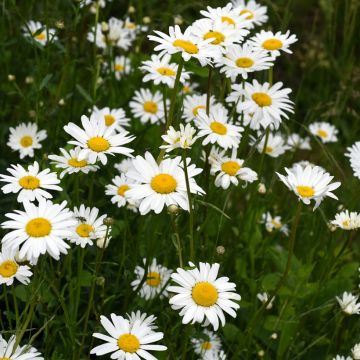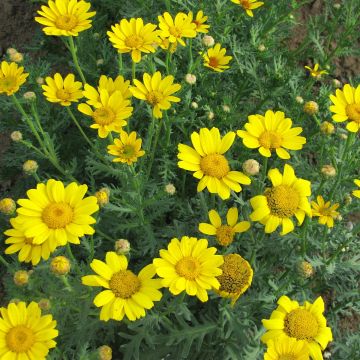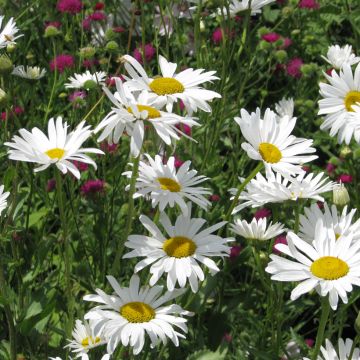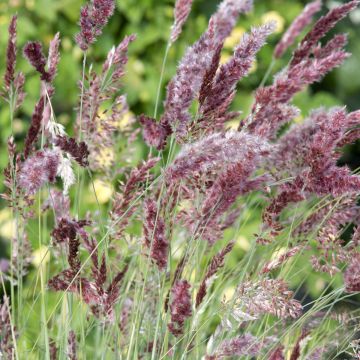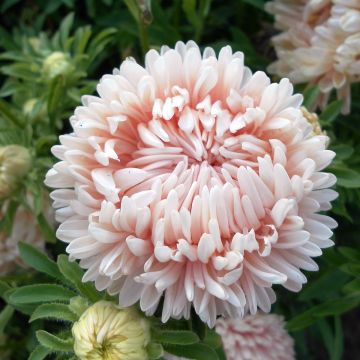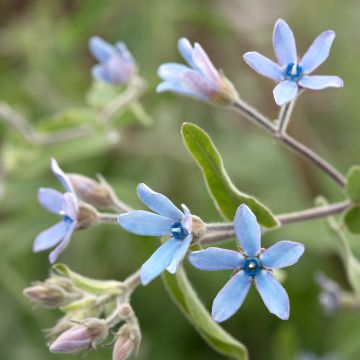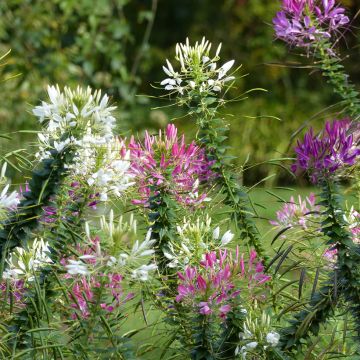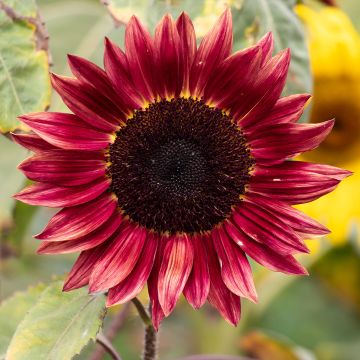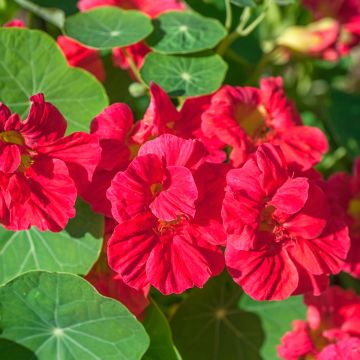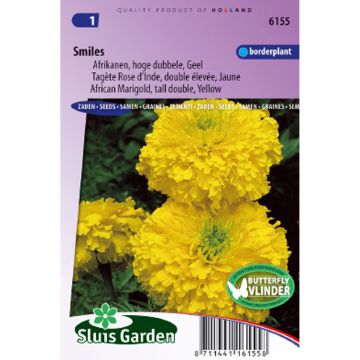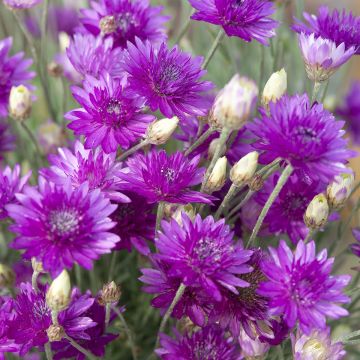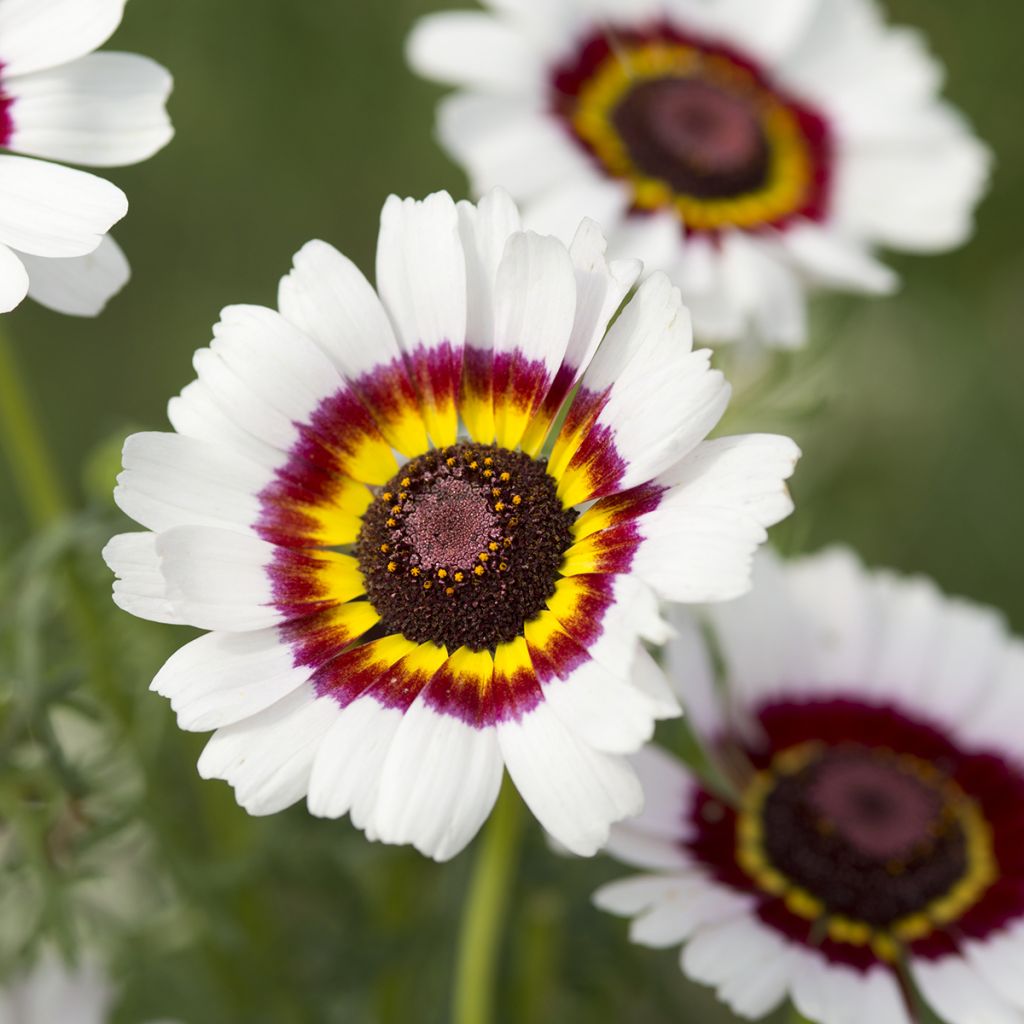

Chrysanthemum carinatum Cockade - Tricolour Daisy
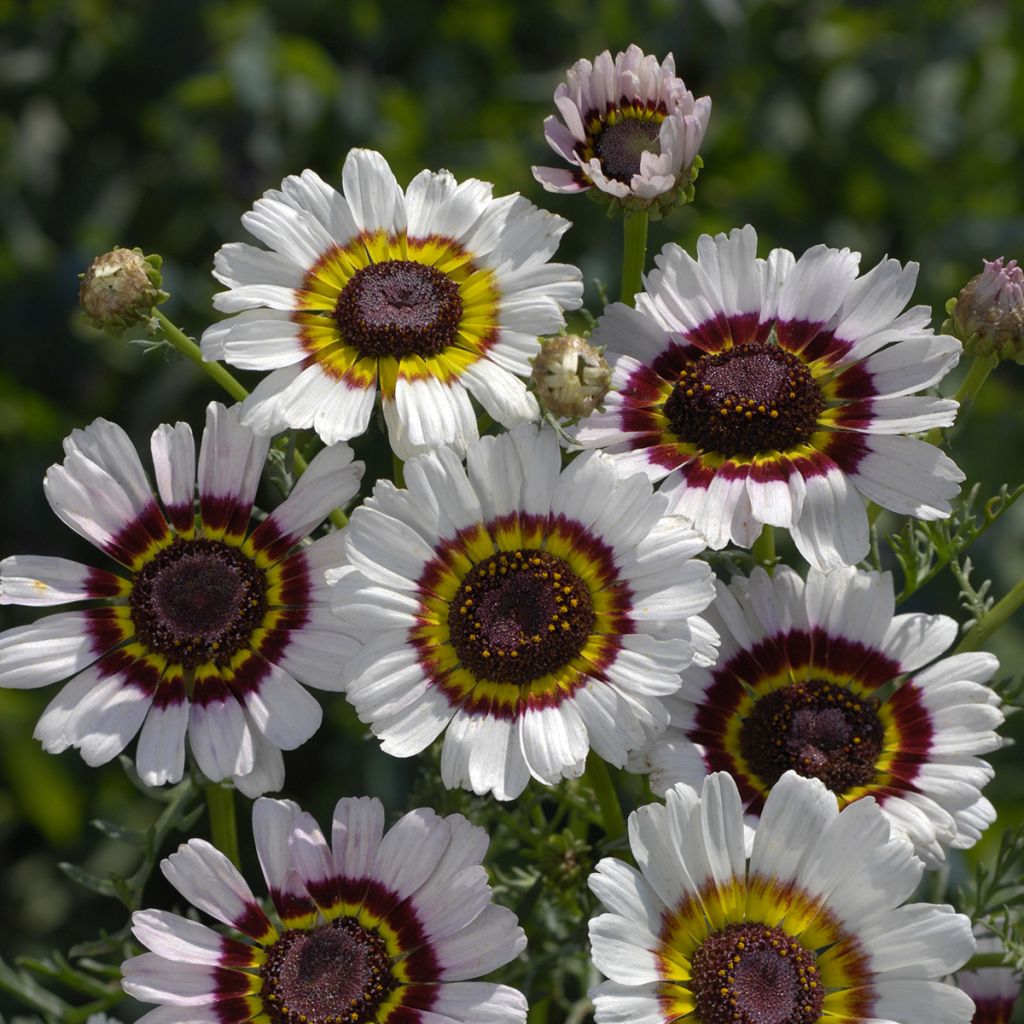

Chrysanthemum carinatum Cockade - Tricolour Daisy
Chrysanthemum carinatum Cockade - Tricolour Daisy
Chrysanthemum carinatum Cockade
Tricolour Daisy, Painted Daisy, Crown Daisy
Special offer!
Receive a €20 voucher for any order over €90 (excluding delivery costs, credit notes, and plastic-free options)!
1- Add your favorite plants to your cart.
2- Once you have reached €90, confirm your order (you can even choose the delivery date!).
3- As soon as your order is shipped, you will receive an email containing your voucher code, valid for 3 months (90 days).
Your voucher is unique and can only be used once, for any order with a minimum value of €20, excluding delivery costs.
Can be combined with other current offers, non-divisible and non-refundable.
Home or relay delivery (depending on size and destination)
Schedule delivery date,
and select date in basket
This plant carries a 6 months recovery warranty
More information
We guarantee the quality of our plants for a full growing cycle, and will replace at our expense any plant that fails to recover under normal climatic and planting conditions.
Would this plant suit my garden?
Set up your Plantfit profile →
Description
The 'Cockade' Keel Chrysanthemum or Chrysanthemum carinatum 'Cockade' is an annual plant nicknamed the "Tricolour Daisy" due to the different colours present on the flower. Here, they create a striking contrast. The large daisy-like heads are white, with a brown-red centre surrounded by yellow and red circles, a colour scheme that can vary among the flowers. It is sown directly in place in April-May in a sunny location.
The Chrysanthemum carinatum, now renamed Ismelia carinata, Ismelia versicolor, or Matricaria carinatum, is an annual plant that produces inflorescences in heads, which we call flowers. It belongs to the large Asteraceae family and originates from Morocco's Atlantic coast. Light, even sandy, and not too fertile soils suit it particularly well, and it has excellent tolerance to salt spray.
The 'Cockade' chrysanthemum first forms a bushy clump reaching a height of 40 cm (16in) and a width of about 30-40 cm (12-16in). Its stems bear highly dissected leaves with linear segments, slightly succulent, of a green-blue colour, somewhat glaucous. Flowering occurs from July to October on sturdy stems reaching a height of 70 cm (28in). The flower head has the shape of a daisy. Its centre is composed of tiny tubular flowers that appear brown when closed. These flowers gradually open circularly, revealing their yellow stamens. The outer part of this daisy is composed of ligulate flowers, i.e., a portion of the flower has been transformed into a long white petal. The base of this petal is adorned with a touch of yellow and another of red, which seems to encircle the flower's heart. The dominant white of the flower, highlighted by contrasting yellow and red, is the attraction of this Tricolour Chrysanthemum (in Latin, Chrysanthemum tricolour). The fruits are angular achenes with three faces, equipped with membranous, translucent wings and topped with an egret.
The 'Cockade' Chrysanthemum is a plant that is not afraid of the cold and can be sown directly in place from April to May without damage. In warm and mild climates, autumn sowing is booming, and the plants flower in spring before the arrival of heat. It is not demanding regarding soil, as long as it is well prepared, but requires sunlight to flower well. It integrates perfectly into a bed of perennial and annual plants, complementing the range of colours. Play with its colours with yellow and red flowers, but also purple, brown, or chocolate foliage. Consider poppies, cosmos, echinaceas, and daylilies. They provide a long-lasting solution for decorating the terrace and balcony when sown in pots. With excellent vase life, their flowers can create beautiful countryside bouquets throughout the summer.
Ecological gesture: by sowing the Keel Chrysanthemum in your garden, you attract pollinating insects that will enjoy its nectar and, at the same time, promote the ecosystem of your garden.
Flowering
Foliage
Plant habit
Botanical data
Chrysanthemum
carinatum
Cockade
Asteraceae
Tricolour Daisy, Painted Daisy, Crown Daisy
Cultivar or hybrid
Other Chrysanthemum seeds
View all →Planting and care
Sow the Chrysanthemum in March-April directly in a sunny spot. Prepare the soil well beforehand and add a bit of compost to it. Scatter your seeds. Cover the seeds by sprinkling some compost, gently pressing down and watering generously with a fine rain.
Growth is fast. Once the young plants have reached a height of 5 cm (2in), thin out the stems a bit and, optionally, transplant some of them into pots or another flower bed.
Remove faded flowers to promote more flowering.
Sowing period
Intended location
Planting & care advice
This item has not been reviewed yet - be the first to leave a review about it.
Similar products
Haven't found what you were looking for?
Hardiness is the lowest winter temperature a plant can endure without suffering serious damage or even dying. However, hardiness is affected by location (a sheltered area, such as a patio), protection (winter cover) and soil type (hardiness is improved by well-drained soil).

Photo Sharing Terms & Conditions
In order to encourage gardeners to interact and share their experiences, Promesse de fleurs offers various media enabling content to be uploaded onto its Site - in particular via the ‘Photo sharing’ module.
The User agrees to refrain from:
- Posting any content that is illegal, prejudicial, insulting, racist, inciteful to hatred, revisionist, contrary to public decency, that infringes on privacy or on the privacy rights of third parties, in particular the publicity rights of persons and goods, intellectual property rights, or the right to privacy.
- Submitting content on behalf of a third party;
- Impersonate the identity of a third party and/or publish any personal information about a third party;
In general, the User undertakes to refrain from any unethical behaviour.
All Content (in particular text, comments, files, images, photos, videos, creative works, etc.), which may be subject to property or intellectual property rights, image or other private rights, shall remain the property of the User, subject to the limited rights granted by the terms of the licence granted by Promesse de fleurs as stated below. Users are at liberty to publish or not to publish such Content on the Site, notably via the ‘Photo Sharing’ facility, and accept that this Content shall be made public and freely accessible, notably on the Internet.
Users further acknowledge, undertake to have ,and guarantee that they hold all necessary rights and permissions to publish such material on the Site, in particular with regard to the legislation in force pertaining to any privacy, property, intellectual property, image, or contractual rights, or rights of any other nature. By publishing such Content on the Site, Users acknowledge accepting full liability as publishers of the Content within the meaning of the law, and grant Promesse de fleurs, free of charge, an inclusive, worldwide licence for the said Content for the entire duration of its publication, including all reproduction, representation, up/downloading, displaying, performing, transmission, and storage rights.
Users also grant permission for their name to be linked to the Content and accept that this link may not always be made available.
By engaging in posting material, Users consent to their Content becoming automatically accessible on the Internet, in particular on other sites and/or blogs and/or web pages of the Promesse de fleurs site, including in particular social pages and the Promesse de fleurs catalogue.
Users may secure the removal of entrusted content free of charge by issuing a simple request via our contact form.
The flowering period indicated on our website applies to countries and regions located in USDA zone 8 (France, the United Kingdom, Ireland, the Netherlands, etc.)
It will vary according to where you live:
- In zones 9 to 10 (Italy, Spain, Greece, etc.), flowering will occur about 2 to 4 weeks earlier.
- In zones 6 to 7 (Germany, Poland, Slovenia, and lower mountainous regions), flowering will be delayed by 2 to 3 weeks.
- In zone 5 (Central Europe, Scandinavia), blooming will be delayed by 3 to 5 weeks.
In temperate climates, pruning of spring-flowering shrubs (forsythia, spireas, etc.) should be done just after flowering.
Pruning of summer-flowering shrubs (Indian Lilac, Perovskia, etc.) can be done in winter or spring.
In cold regions as well as with frost-sensitive plants, avoid pruning too early when severe frosts may still occur.
The planting period indicated on our website applies to countries and regions located in USDA zone 8 (France, United Kingdom, Ireland, Netherlands).
It will vary according to where you live:
- In Mediterranean zones (Marseille, Madrid, Milan, etc.), autumn and winter are the best planting periods.
- In continental zones (Strasbourg, Munich, Vienna, etc.), delay planting by 2 to 3 weeks in spring and bring it forward by 2 to 4 weeks in autumn.
- In mountainous regions (the Alps, Pyrenees, Carpathians, etc.), it is best to plant in late spring (May-June) or late summer (August-September).
The harvesting period indicated on our website applies to countries and regions in USDA zone 8 (France, England, Ireland, the Netherlands).
In colder areas (Scandinavia, Poland, Austria...) fruit and vegetable harvests are likely to be delayed by 3-4 weeks.
In warmer areas (Italy, Spain, Greece, etc.), harvesting will probably take place earlier, depending on weather conditions.
The sowing periods indicated on our website apply to countries and regions within USDA Zone 8 (France, UK, Ireland, Netherlands).
In colder areas (Scandinavia, Poland, Austria...), delay any outdoor sowing by 3-4 weeks, or sow under glass.
In warmer climes (Italy, Spain, Greece, etc.), bring outdoor sowing forward by a few weeks.






























